Enhancing Soft Skills for DevOps Engineers: Essential Non-Technical Skills to Thrive
Communication Expression and Storytelling
Section Agenda and Why
In this lesson, we’ll walk through the agenda and explain why mastering communication, clear expression, and compelling storytelling is essential for DevOps professionals.
Pre-Assessment
Before you begin, take the quick quiz: “Are you a great communicator?” This helps you gauge your starting point.
- If you didn’t hit the target score, you’re in the right place to build foundational skills.
- If you did, this course will refine and elevate your existing techniques.
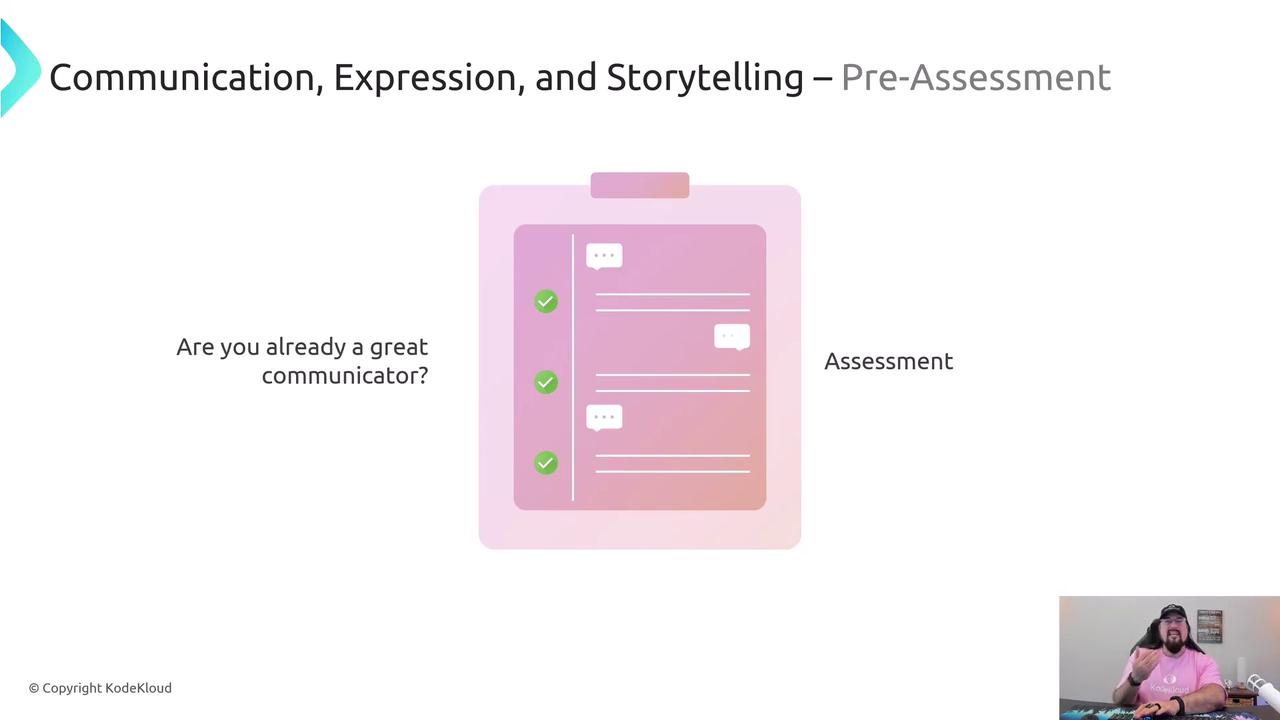
Why Communication and Storytelling Matter
People conceive, implement, and maintain technology—and they rely on clear communication to stay aligned. Strong storytelling bridges gaps, speeds delivery, and reduces friction. Without it, projects stall and teams misinterpret requirements.
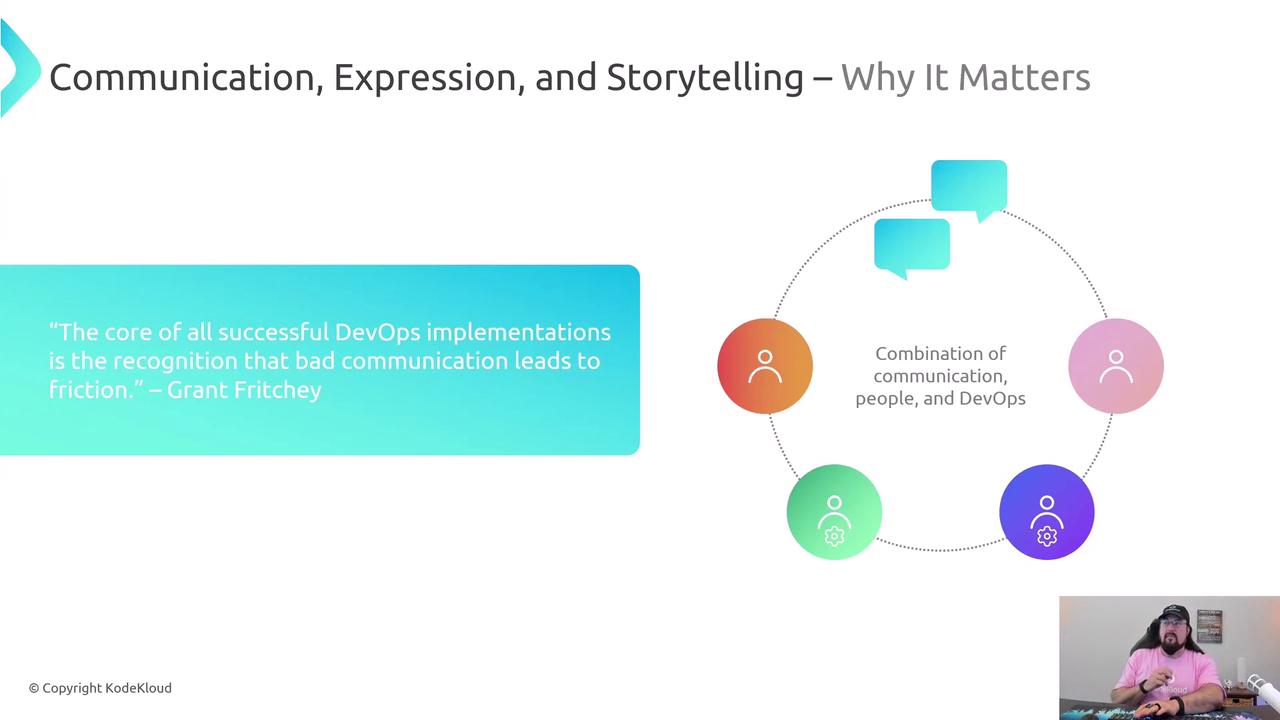
What You’ll Learn in This Section
You’ll master four core communication competencies critical to DevOps success:
| Skill Category | Key Focus |
|---|---|
| Verbal Skills | The 7 C’s of clear, concise, and courteous speech |
| Non-Verbal Skills | Tone, facial expressions, posture, and micro-expressions |
| Written Skills | Emails, documentation, code comments, and formatting |
| Professionalism | Managing distractions, stress, and workplace challenges |
1. Verbal Skills
Discover the 7 C’s of Effective Verbal Communication:
- Clear
- Concise
- Correct
- Coherent
- Complete
- Concrete
- Courteous
Use this checklist for every conversation: Is it clear and accurate? Is it structured and respectful?
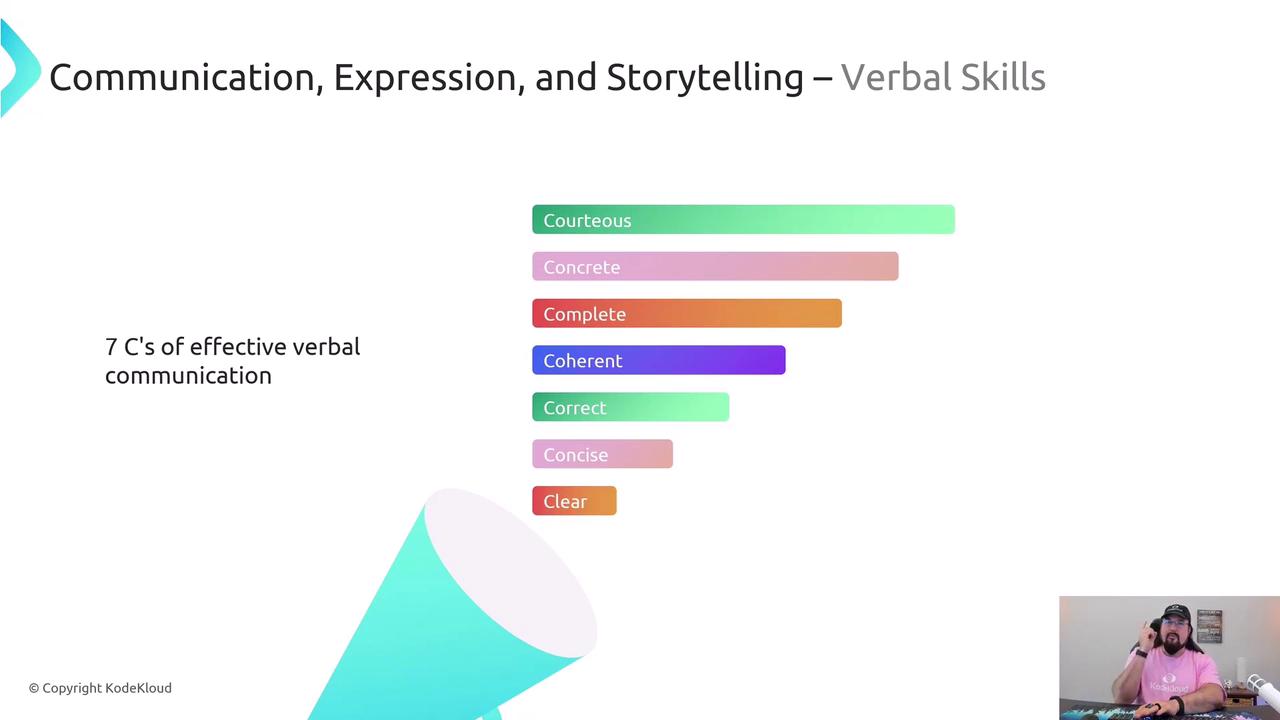
2. Non-Verbal Skills
Learn how tone of voice, facial expressions, and body language reinforce—or contradict—your message. We’ll cover interpreting micro-expressions and leveraging posture to project confidence.
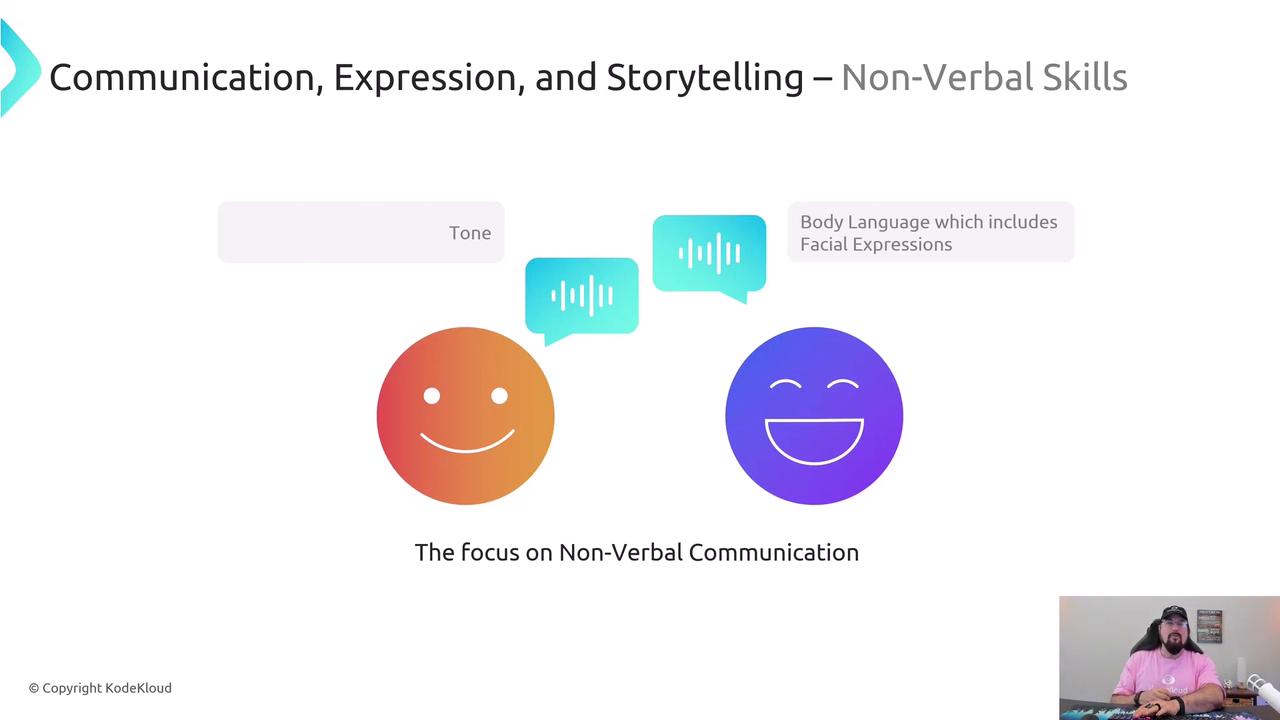
3. Written Skills
Tailor your writing for different audiences and mediums. You’ll practice email etiquette, technical documentation, and concise code comments—knowing when to adapt tone and structure.
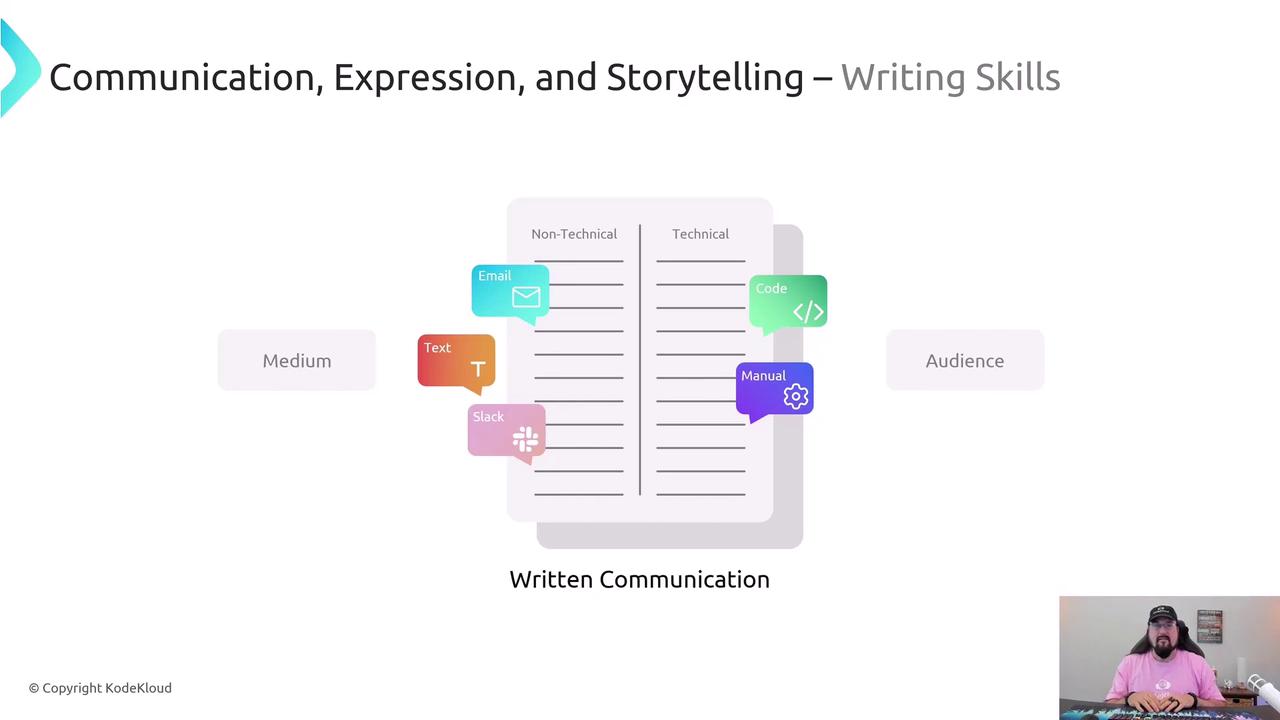
4. Professionalism
Focus amid distractions—internal (stress, triggers) and external (notifications, social media)—is key. We’ll explore strategies to stay impartial, handle conflicts gracefully, and maintain a client-centric mindset.
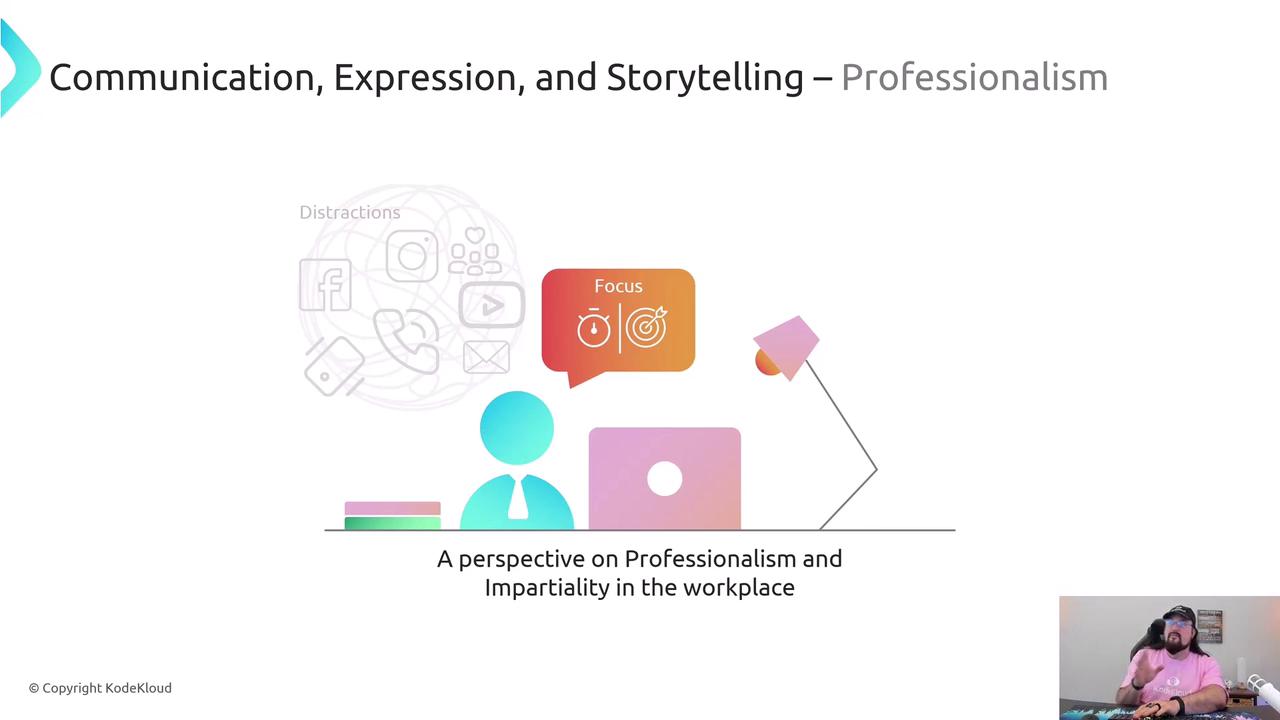
Assessment and Next Steps
After completing this section, retake the communication assessment to measure your improvement. This module is the first of six core sections—each dedicated to a critical non-technical skill. Coming up: collaboration, leadership, and more.
The closing video, “Information versus Story,” will demonstrate how to craft a narrative that resonates—rather than just reciting facts.
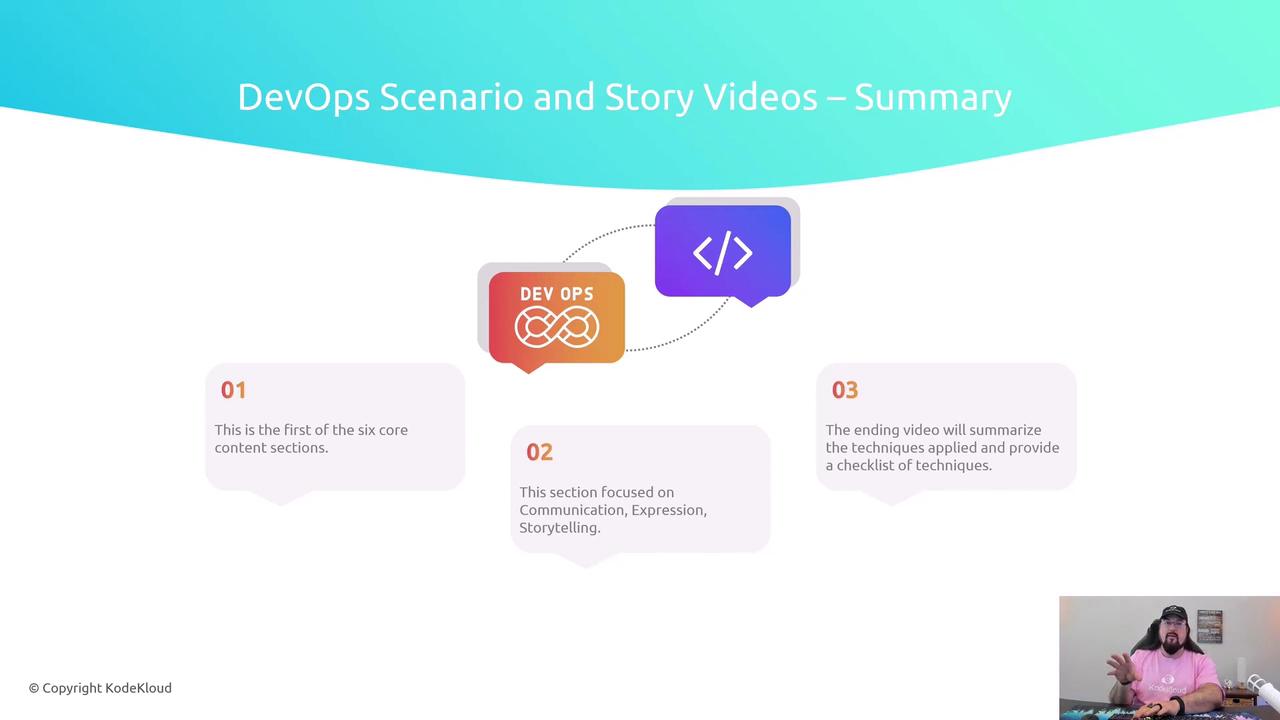
If you have questions, join the forums or contact me at michael.kodekloud.com. See you in the next lesson!
Watch Video
Watch video content